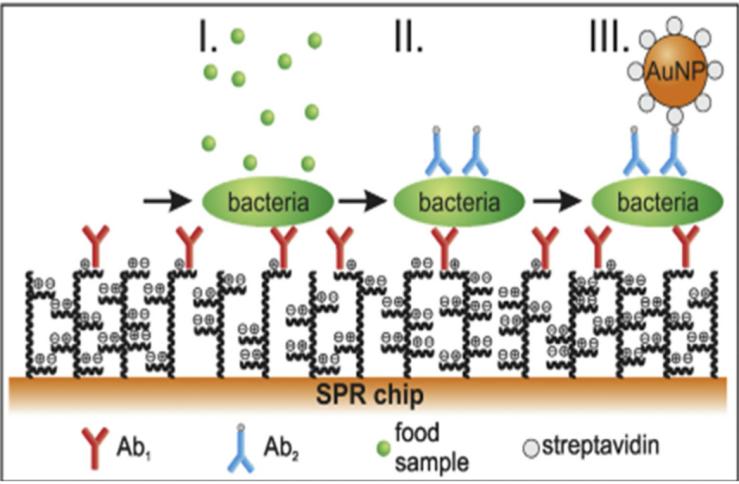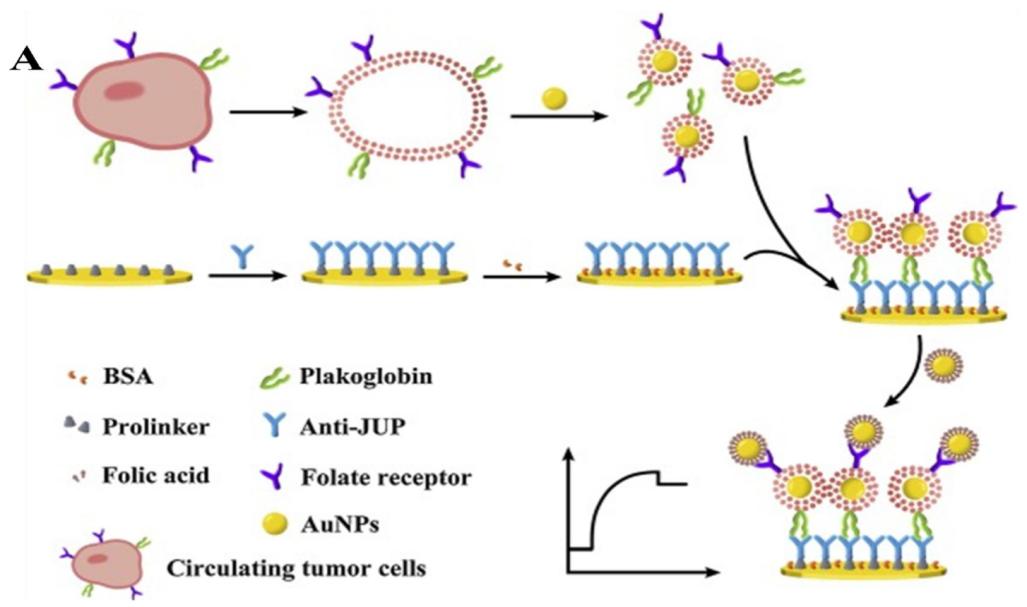Surface plasmon resonance (SPR) technology is an optical sensing technology that can monitor the refractive index change of metal surface with high sensitivity, which is less destructive, free of labeling and real-time monitoring. Under certain conditions, when the incident light irradiates the metal surface, the free electrons on the metal surface oscillate collectively, and when the oscillation frequency of the electrons coincides with the frequency of the incident light wave, the plasma resonance phenomenon on the metal surface is generated. Surface plasmon resonance (SPR) techniques can be classified according to whether the electromagnetic field at the metal surface propagates along a plane or is confined to metal nanostructures (i.e., confined surface plasmon excitations) of less than the incident wavelength as follows, i.e., SPR sensing techniques based on metal thin films and localized surface plasmon resonance (LSPR) sensing techniques based on metal nanoparticles.
Gold nanoparticles are tiny particles of gold with a diameter of 1 to 100 nm, which have high electron density, dielectric properties and catalytic effect, and can bind to a variety of biological macromolecules without affecting their biological activity. Gold nanoparticles can also be called AuNPs. AuNPs is generally divided into powder and liquid form, powder is AuNPs powder, also known as gold nanoparticles, etc. The color of AuNPs powder is black or brown powder depending on the particle size.
AuNPs have the advantages of large specific surface area, easy functionalization, good biocompatibility and stability, etc. In addition, the electric field coupling between the local surface plasmon of AuNPs and the surface plasmon wave of gold film can also significantly enhance the SPR signal, therefore, AuNPs are commonly used to improve the detection sensitivity.
Visual analytical techniques developed based on surface plasmon resonance absorption of AuNPs are widely used for the detection of metal ions, bioactive molecules, mycotoxins, drugs and contaminants. Homola designed SPR sensors based on AuNPs and polymeric molecular brushes that resist non-specific adsorption for the detection of foodborne pathogenic bacteria in food (see Figure 1). First, bacteria are specifically captured by antibodies (Abl) immobilized on a polymeric molecular brush, and then AuNPs functionalized by antibodies (Ab2) bind to the previously captured bacteria for SPR signal amplification, enabling the detection of E. coli down to 17 CFU/mL. The SPR sensor not only exhibits excellent resistance to non-specific adsorption in hamburger and cucumber samples, but also enables the detection of both E. coli and Salmonella in cucumber and burger samples.
 Figure 1. AuNPs for the detection of pathogenic bacteria in food
Figure 1. AuNPs for the detection of pathogenic bacteria in food
Chen et al. used an SPR sensor based on cell membrane fragment-functionalized AuNPs (M-AuNPs) and folic acid (FA)-functionalized AuNPs (FA-AuNPs) to enhance the signal for the detection of circulating tumor cells (CTCs) (see Figure 2). CTCs membrane fragments were first mixed with AuNPs to obtain M-AuNPs, and then the gold membrane surface was. Next, FA receptors on FA-AuNPs. are combined with FA receptors on M-AuNPs to achieve dual amplification of the SPR signal. This method not only enables the detection of as low as 1 CTCs per ml, but also improves the specificity of the detection of CTCs.
 Figure 2. AuNPs for the detection of circulating tumor cells (CTCs)
Figure 2. AuNPs for the detection of circulating tumor cells (CTCs)
References